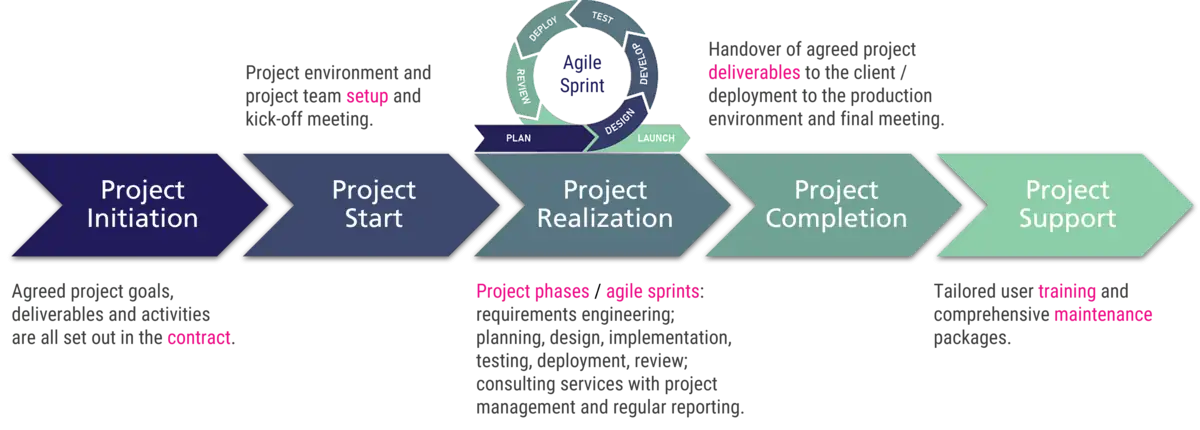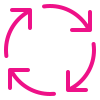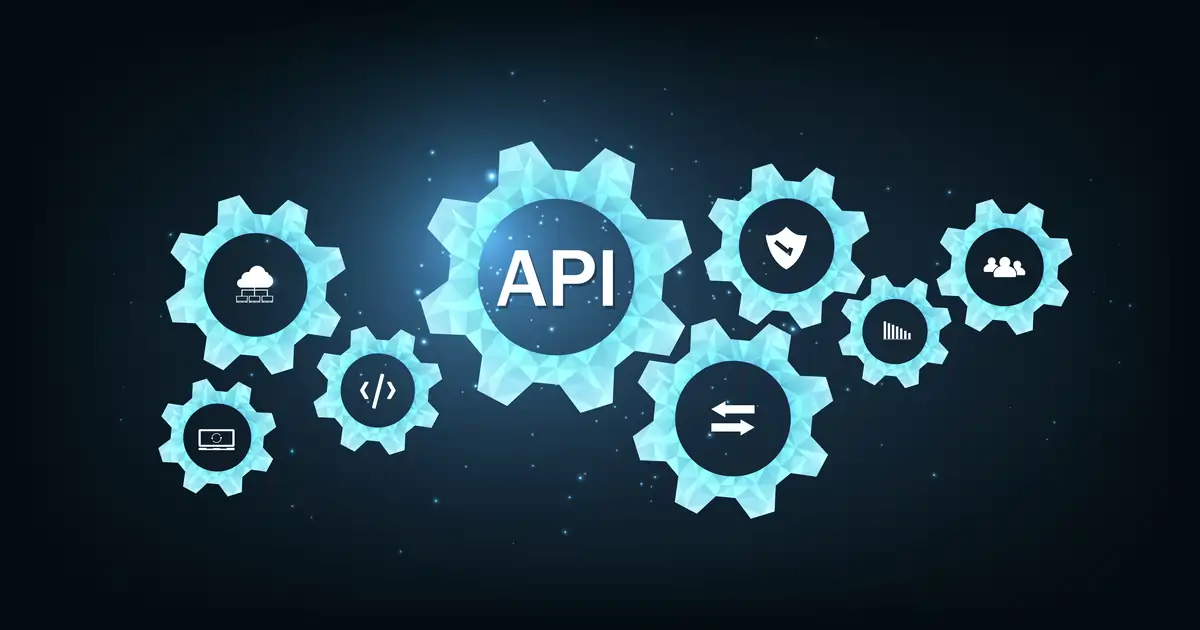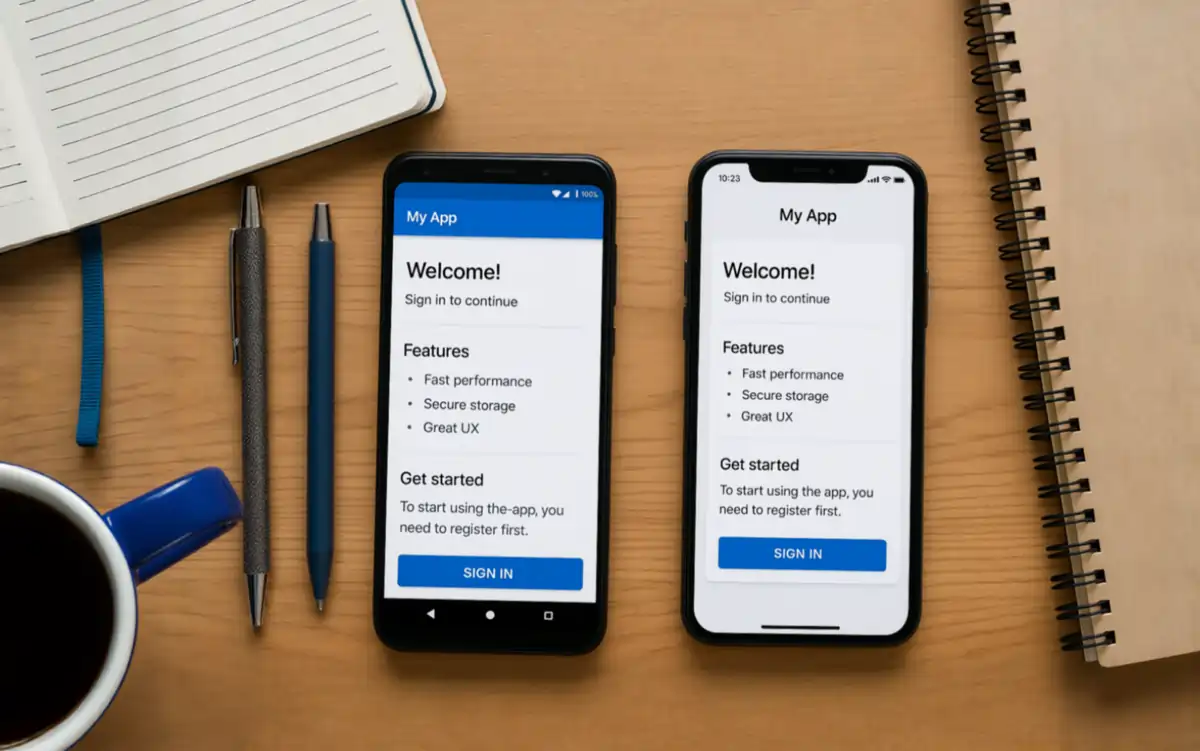Driving Innovation
Technical Applications
Aligned With Your Business Needs
Set your sail for success with our custom software and effective product strategies. Partner with us as your end-to-end solution provider for technical applications↗ to achieve your business goals with confidence.

Software Engineering and Product Management for Technical Applications
Who We Are

As a customer-centric technology company, entrepreneurboat provides custom software solutions and product consulting with a focus on technical applications for SMEs across various industries.
entrepreneurboat is led by its founder Bart Kukla, who has more than a decade of experience in safety-critical software engineering and leading global product development teams.
Our Services
Software Development
Custom software solutions with a focus on technical applications tailored to meet your specific needs.
Product Consulting
Expert guidance on product requirements, product strategy, product roadmap, and product idea validation.
Support Services
Comprehensive training to increase user proficiency and maintenance services to keep your system up and running.
Software Development
-
 Apps
AppsResponsive web and mobile apps as frontend and standalone applications.
-
 Backend Systems
Backend SystemsScalable cloud/edge-based and self-hosted backend systems.
-
 Automation
AutomationEfficient process automation with a focus on interoperability, system integration, and data aggregation.

Product Consulting

h
-
 Requirements Engineering
Requirements EngineeringThorough product requirements analysis and clear specification.
-
 Product Strategy
Product StrategyInitial product vision, solid product strategy, and tailored product roadmap.
-
 Product Idea Validation
Product Idea ValidationFast product idea validation and comprehensive user insight analysis.

Support Services
-
 User Training
User TrainingEffective user training tailored to the target audience and training purpose.
-
 Maintenance Services
Maintenance ServicesWide range of maintenance services including updates, monitoring, troubleshooting, and implementation of change requests.
Challenges for SMEs in the Digital Age
In today’s rapidly changing digital landscape, businesses are under increasing pressure to modernize their software systems, adopt new technologies, and provide digital products that meet changing customer expectations.
However, many struggle to keep pace, not due to a lack of vision, but due to practical constraints. Limited resources or gaps in technical expertise often stand in the way. Furthermore, outdated systems (legacy software) or the consequences of unconsidered decisions in software development (technical debt) frequently cause headaches.
These challenges can stall growth and innovation, whether it’s optimizing outdated infrastructure, integrating new tools, or turning a promising product idea into a market-ready solution.
entrepreneurboat helps SMEs overcome these barriers by providing them with reliable, tailored, and business-aligned custom software solutions with a focus on technical applications.

Top 5 Challenges
Below, you will find the top five challenges that SMEs face in today’s digital age, illustrated by real-life examples, and how we help our clients overcome them. These difficulties are primarily caused by resource constraints, gaps in technical expertise, insufficient automation, and the implications of running outdated software and prototype-like apps.
Which of the following scenarios best reflects your current circumstances?
1.
“We have a great product idea — but we’re unsure how to build it or make it succeed.“
You have a promising product concept, but you need help turning it into a viable, scalable product. This includes clarifying the product strategy, the technical path, minimum viable product (MVP) scope, and validation strategy.
Pain Points:
- Uncertainty about technical feasibility and choosing the right architecture and technology stack.
- Difficulty defining the right product strategy, MVP type, and validation approach.
- Resource constraints for conducting validation and analyzing user insights.
Our Solution:
We guide you from idea to execution. After developing a solid product vision and product strategy, we determine critical requirements, create a MVP quickly, and validate it by collecting and analyzing user insights. Once your product idea is validated, you can be confident that full custom software development will pay off.
Example:
Scenario: A company in agriculture wants to monitor soil moisture and temperature across multiple fields to optimize irrigation.
Solution: We define the product strategy, MVP type and features, as well as the test user profile for validation. For the MVP implementation, we select low-power narrowband IoT sensors, and build a backend system with a data ingestion pipeline using AWS IoT Core, a time-series database, and alert logic for threshold breaches. A mobile-friendly dashboard built with a no-code platform displays real-time sensor data and sends push notifications.
Outcome: Within 6 weeks, the system is deployed on 10 test fields, reducing water usage by an average of 18% and improving crop yield predictability. Technical feasibility is proven and the test users commit to purchase the system once developed.
2.
“Our existing systems are becoming a liability — they’re hard to maintain, integrate, and scale.“
As your business evolves, your current software systems may become unable to meet your current needs. A growing number of issues and concerns can impede operations and restrict your ability to innovate or scale.
Pain Points:
- Issues and concerns with outdated software systems, including compatibility, interoperability, security, and performance.
- Limited scalability due to inappropriate architecture, technology stack, and accumulated technical debt.
- Functionality gap between the legacy system and a required system due to evolving business needs.
Our Solution:
We analyze your business needs and assess your existing systems to redesign them for long-term viability. This process involves determining critical functionality requirements, modernizing architectures, and implementing your new system (reengineering). We improve system interoperability, enhance security, and ensure optimal performance and scalability.
Example:
Scenario: A manufacturing company uses an older ERP system that can’t integrate with modern analytics tools or IoT devices.
Solution: After conducting a thorough business analysis and specifying the requirements, we evaluate your existing systems and recommend modernization measures. During the reengineering process, we design a middleware layer with secure APIs that connects the ERP system to external systems while securing network access. We migrate critical components to maintainable modules, implement role-based access controls, and establish reliable monitoring.
Outcome: The company gains real-time visibility into production data, reduces manual data handling by up to 40%, and lays the groundwork for future automation and analytics projects, ensuring that their system is future-proof.
3.
“Our processes are slow and error-prone — this must change, if we want to stay competitive.”
Your business still relies on spreadsheets, generic tools, and data silos Although you use IT quite a lot, your processes seem inefficient: there is a high volume of manual work, and errors occur frequently.
Pain Points:
- Manual tasks are time-consuming and error-prone.
- Off-the-shelf tools don’t fit your worklows or industry-specific needs.
- Lack of software-based automation limits your ability to scale or serve more customers.
Our Solution:
We design and develop custom software solutions that reflect your business logic and operational requirements. We create robust, scalable solutions aligned with updated processes that streamline and automate your workflows and support your growth, from automations and backend systems to user-facing applications.
Example:
Scenario: An engineering consultancy manually runs thermal simulations for client projects using desktop tools. The results are then exported to Excel and compiled into reports by hand. Several team members are then involved in a subsequent review and check of the report. This process takes days and is prone to errors.
Solution: We develop a custom application with a web frontend that automates the submission of simulation jobs, parsing of results, and generation of reports. The backend system, which is built with Python and FastAPI, interfaces with the simulation engine via the command line interface (CLI) and converts output files into structured data. The results are stored in a PostgreSQL database and visualized in an interactive React front end with PDF export functionality. The application also adds a new feature that assesses thermal results, categorizes them according to industry-standard thresholds, and recommends potential measures to reduce overheating.
Outcome: Simulation turnaround time is reduced by up to 80%. Engineers spend less time on repetitive tasks, and clients receive standardized, high-quality reports with additional recommendations within hours instead of days.
4.
“We’re not sure how to develop our product — or which features to prioritize.”
You have a product idea or digital initiative and the risk of commercial failure is low. However, you’re still missing a clear strategy. Without structured planning, it’s easy to waste time and budget on features that don’t deliver value while neglecting those that do.
Pain Points:
- No clear product strategy or product roadmap.
- Difficulty aligning product features with user needs and business goals.
- Risk of building too much too soon — or the wrong thing entirely.
Our Solution:
Based on your product idea, we help you develop a compelling product vision and a clear product strategy. Through structured discovery, we identify your core value proposition and ideal customer profile. Then, we define the right minimum viable product (MVP) scope to gather user insights for feature prioritization. Finally, we create a product roadmap that aligns with your users’ needs and business objectives.
Example:
Scenario: A startup in the industrial safety industry wants to build a platform that collects data from wearable sensors (e.g., gas exposure, motion, and temperature) and sends real-time alerts to supervisors. However, they are unsure which features are critical for the MVP and how to validate them in the field.
Solution: We conduct a product strategy sprint to define user roles (e.g., field workers, supervisors, and safety officers), map out core use cases, and prioritize features for the MVP. The MVP utilizes bluetooth low energy (BLE) for data collection from wearables, edge processing on a Raspberry Pi gateway, and cloud sync via MQTT. The backend system, built with Node.js and TimescaleDB, stores sensor data and triggers alerts. A lightweight dashboard as web frontend implemented with React and WebSocket provides real-time monitoring and historical analytics. We also define a validation plan with two industrial partners and implement telemetry to track feature usage.
Outcome: The MVP is deployed at two pilot sites within 11 weeks. Real-time alerts reduce incident response time by an average of 30%, and feedback shows that supervisors prioritized mobile alerts and historical exposure reports, which guides the next development phase.
5.
“We don’t just need software — we need a partner who supports us beyond delivery.“
You’re not just looking for a development team to build a solution for your current business needs, a custom software. You want a bug-free, future-proof product that can be applied efficiently by its users and always aligns with your evolving business needs.
Pain Points:
- Ensuring that a software system is always operational, bug-free, up-to-date, and aligned with current needs.
- Support the change process by properly onboard users and train them to efficiently use the new software solution.
- Concerns and issues related to changing partners for development and support.
Our Solution:
We offer full-service solutions, covering the entire development lifecycle, from ideation to support. In addition to development, we provide user training, documentation, and ongoing maintenance, including functional change requests. Our goal is to ensure your team is equipped to effectively use the solution and that it evolves alongside your business.
Example:
Scenario: An industrial automation company requires a custom control and monitoring system for its new generation of robotic assembly units. The system must interface with embedded systems, provide real-time feedback, and meet strict uptime and cybersecurity requirements. However, the company lacks the internal capacity to provide long-term support and ensure secure deployment.
Solution: We develop a hybrid system that includes a C++/Rust-based embedded interface layer, uses ZeroMQ as a soft real-time messaging bus, and a cloud-based control dashboard built with React and WebSocket streaming. The backend sytem uses Node.js and PostgreSQL and includes audit logging, role-based access control, and encrypted data channels. We implement a DevSecOps pipeline with automated security scans, containerized deployments using Docker and Kubernetes, and remote diagnostics. We also deliver technical training to the client’s engineering team and provide a long-term support contract that includes proactive system health monitoring and handling of functional change requests after launch.
Outcome: The system is deployed across 8 production lines and has 99.99% uptime. It meets ISO 27001 security requirements and enables remote diagnostics, reducing on-site maintenance visits by roughly 40%. entrepreneurboat ensures continuous updates and compliance support, and the client’s team is fully trained.
Your Solutions
Technical Software
Software solutions for engineering and industrial / embedded applications that require advanced technical expertise.
Software Reengineering
Rebuilding legacy and no-/low-code software to improve system functionality, performance, scalability, security, and compatibility.
MVP Development
Rapidly built Minimum Viable Product (MVP) to quickly turn a product vision into a tangible idea ready for validation testing.
How We Work
-
 Development Process
Development ProcessOur software projects follow our propietary development process, which is a hybrid model that incorporates the best of both the traditional and agile worlds.
It is derived from industry-standard safety-critical development process frameworks to ensure that requirements are met, and deliverables are free of defects, and from agile frameworks to respond quickly to change requests.
Its core and supporting processes are lightweight, keeping process overhead and effort to an absolute minimum and project management agile.
-
 Project Flow
Project FlowOur software development projects typically have 5 high-level phases, while the “Project Realization” phase is the one where the actual development takes place:

Your Benefits
-
 Specialization
SpecializationEffective and efficient solutions for your technical applications.
-
 End-to-End Solutions
End-to-End SolutionsOne-stop shop from ideation to maintenance with seamless support throughout your project.
-
 Consulting Services
Consulting ServicesBeyond development – we help you define a solid product strategy to make your product a success.
-
 Development Process
Development ProcessOur robust processes ensure that your deliverables meet critical requirements and the highest quality standards.
-
 Customer-Centricity
Customer-CentricitySolutions specifically designed to meet your unique business needs.

Have a project idea in mind?
Let’s find out how we can help you turn your vision into reality!
Set your sail for success with solutions tailored to your unique business needs
Frequently Asked Questions (FAQ)
What is a technical application?
Technical applications are specialized use cases for software solutions designed to perform specific, often complex tasks that require a high level of technical expertise. These applications are commonly utilized in fields such as engineering and manufacturing, as well as other technical areas. They leverage advanced technologies like machine learning, artificial intelligence, blockchain, and internet of things (IoT) to solve industry-specific problems. Unlike general-purpose applications, which aim to optimize broader business processes, technical applications address intricate engineering challenges. Specialization in technical applications and software, backed by engineering expertise, ensures tailored solutions that deliver higher quality and more reliable outcomes compared to general software development services.
Do you offer individual or bundled services?
We offer both individual and bundled services to meet your specific needs. If you have a specific task that aligns with your goals, individual services may be the best option. However, if you’re looking for a comprehensive solution, our bundled services are designed to address your needs holistically. We typically start with a business analysis to determine your true needs and create a strategic plan to define the scope and mode of the project. Support services such as training or maintenance can always be provided at a later stage.
What is the typical duration of a development project?
The duration of a software development project typically ranges from a few weeks to several months, depending on its scope and complexity. The more detailed the initial requirements and constraints, the more accurately we can estimate the project timeline. However, external factors and change requests can significantly impact the timeline. Therefore, any initial time estimation should be considered a rough indicator.
How do you handle communication and reporting throughout the project?
Effective communication is critical to understanding the true needs of our clients. It is also important to ensure that the project remains aligned with its goals throughout the course of the development. We are committed to keeping our clients informed and providing them with the information they need to make the best decisions. Our communication strategy includes both live meetings and messaging. During the development phases, we prefer asynchronous communication for coordination and reporting, limiting live meetings to a necessary minimum to save our client’s valuable time.
What technologies do you use to develop software?
We are committed to delivering solutions that are tailored to the real needs of our clients and aligned with their objectives. Therefore, the choice of a technology stack or tech stack (collection of programming languages, frameworks, tools, etc. used for developing and deploying a software system) depends on the specific solution to be built. Our process starts with defining the product goals and requirements. Next, we plan the product architecture, exploring multiple tech stack options. Finally, we select the most appropriate technology stack and adjust the architecture as needed. In general, we prefer well-established technologies to ensure reliability.
How do you ensure that the final product is flawless?
We are committed to excellence, especially in our deliverables. To ensure that products meet their requirements, we have a strong development process in place from the outset, laying the foundation for a bug-free approach. Once software, or parts of it, are created, we perform thorough testing procedures, such as module, integration, functional testing, and more. For change requests, we also perform impact analysis and regression testing to assess the impact on the existing system and ensure that changes do not introduce new problems.
How do you make sure that the final product meets my needs?
We prioritize a customer-centric approach, working closely with you to understand your requirements and goals. Regular feedback loops and iterative development throughout the project ensure that the final product aligns perfectly with your business needs. Our agile process accommodates changes in your objectives, allowing for necessary adaptations. Additionally, we offer post-launch maintenance services, including change requests, to keep your solution aligned with your evolving needs.


